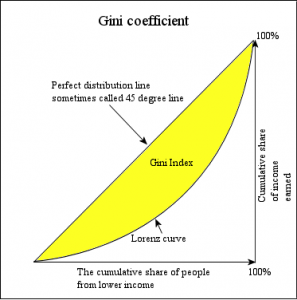Concern about inequalities of income and wealth is now a fashionable topic. It featured strongly in the gathering of the world’s top brass at Davos earlier this year. Much of the popular coverage of the topic gives the impression that not only is inequality at record highs, but that it is confined to the wicked Anglo-Saxon economies. A recent paper published by authors linked to the George Soros-funded Institute for New Economic Thinking shows very decisively that neither of these points is true.
Tony Atkinson, former Warden of Nuffield College Oxford, and Salvatore Morelli examine trends in both income and wealth inequalities in 25 countries since 1900. Their work is a very impressive piece of scholarship, requiring detailed examination of a wide range of data sources. Even so, there are often historical gaps where no information is available. Regrettably, too, the study includes neither Russia nor China, socialist societies characterised by massive inequalities. In the old Soviet Union, for example, in the early 1950s the diet on offer to the general population was no better than that in the labour camps, whilst the Party elite luxuriated.
It is certainly the case that inequalities have increased in the UK and the US in recent decades. A crude but widely used measure of inequalities in inco
me and wealth is the so-called Gini coefficient. Theoretically, this can range between 0 and 100. If it is zero, everyone has literally the same amount. If it is 100, one person has all the income or wealth and no-one else has anything. Obviously, these theoretical extremes can never be observed in practice. The key point is that the higher is the GIni, the greater is inequality. Looking at the distribution of income, in Britain in the 1950s and 1960s, the Gini was approximately 30.
Atkinson and Morelli estimate that in America the Gini coefficient was 7 percentage points higher in 2012 than it was in 1980. For the UK, the increase was even higher, at 10 percentage points, though they note that much of this increase took place during the 1980s. Contrary to popular perception, it has not risen sharply since then. The authors also have a measure of ‘relative poverty’, which is even more interesting. The relative poverty rate in 1990 was twice that of 1977, but “overall the poverty rate has been falling since the 1990s”. In America, it has been “constant since about 1970”, although with cyclical variations around this level.
Strikingly, in the Scandinavian countries, often held up as exemplars of ‘fair’ societies, inequality has risen. In Norway, the Gini coefficient for income is 4 percentage points higher than it was in 1986. In Finland, it is 6 percentage points up on its 1990 level. And in Sweden, since the early 1980s, the Gini has increased by no less than 10 percentage points, just the same as the UK.
Atkinson and Morelli do not offer explanations of movements in inequality, but they provide an excellent example of the value of meticulous empirical analysis in economics.
As published in City AM on Wednesday 19th March 2014
Image Source: Volterra 2014


